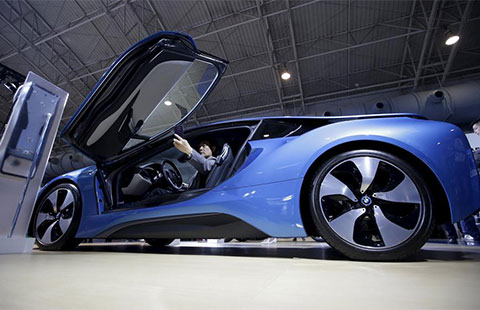Banking on sound strategies to overcome challenges
By Peter Pak in Hong Kong (China Daily) Updated: 2012-11-16 14:42
|
 |
With the Chinese economy entering a transition period, mainland banks are faced with three major challenges, including increasing off-balance sheet businesses, tightening control on capital requirements and interest rate liberalization, with the last one being the biggest threat which could hurt lenders' earnings prospects.
In the wake of these challenges, banks should adopt some sound strategies to weather the strong headwinds during the economic transition.
First, banks should strengthen their risk pricing capability and put more emphasis on small-to-medium enterprises and retail business. Following the progress of financial disintermediation and interest rate liberalisation, large corporate clients will become less reliant on bank financing and thus banks' bargaining power will be undermined.
As such, to ensure business growth and maintain high profitability, banks must expand downward to develop SME and retail customer resources. In such a process, they have to innovate with regard to the lending flow and risk management techniques while balancing risks and yields through better risk pricing.
Second, innovative product lines plus integrated businesses. Economic transition means basic deposit and loan business will see continuous downward pressure on profitability and narrowing room for growth. Banks will need to adapt to the trends and the changing financial demands of customers by rolling out new products and services.
Looking ahead, large clients' demand for direct financing will bring more business opportunities to banks' investment banking divisions, while the increasing household income will speed up their asset management business.
In fact, many major international players such as JP Morgan and HSBC have all adopted a mixed business model, with investment banking and asset management businesses contributing 20-40 percent of their income. Although the mainland still follows the model of separate supervision over different businesses, commercial banks can actively pursue comprehensive operations under the current monitoring framework.
Third, banks should have optimised organisational structures with an enhanced corporate culture. Changes in customer mix and business innovation are founded upon organisational structure and corporate culture. In future, customers' needs will not be limited only to credit services, but also cover various aspects including investment services, settlement, and wealth management. This integrated mode of financial operations requires close cooperation and coordination among different divisions.
Commercial banks should come up with an appropriate organisational structure for future development. Apart from the traditional framework of headquarters and branches, business divisions should also be introduced. In order to adapt to changes in the external environment, commercial banks must also foster a flexible and efficient corporate culture.
The multiple layers of reporting and top-down corporate culture are inadequate to cope with intense market competition. Banks should also flatten the hierarchical structure in order to build an information-centric system and foster timely communication among various branches and offices, thereby flexibly adjusting their operational strategies.
Last but not least, banks should push for higher efficiency in capital utilisation with more contribution from retail and intermediary businesses. Following the implementation of the new capital requirements, the previous rapid growth of the commercial banks is not sustainable.
Under current market conditions, banks can only accumulate capital internally. As such, capital efficiency determines their profitability. Going forward, the rate of return on capital will be a key criterion for banks' strategic moves, and they will allocate more resources to the retail and intermediate businesses that command high return on capital.
Meanwhile, banks need to realise capital cost in product prices through upgrades in IT systems.
After all, the current bank-led financial system is closely associated to China's economic growth model in the past decade which used to rely heavily on exports and investment. During the process of economic transition and financial reform, both assets and liabilities of the banking sector will face stiff challenges and are superimposed against asset quality risk amidst the economic downturn.
Consequently, we see lots of uncertainties in the foreseeable future while China's large banks can still be formidable names in the sector if they take correct and necessary steps as soon as possible.
The author is an executive director at BOCI Securities. The opinions expressed here are entirely his own.
- Stora Enso's $2.9b board and pulp mill operational in China
- Midea bids for control of German robot-maker Kuka with $5.16b
- More wealthy Chinese head overseas to see doctor
- COSCO Shipping Bulk sets sail
- Tencent may acquire stake in game developer Supercell
- Alibaba says it does fight fake products really
- Chinese investments in soccer come under scrutiny
- Jack Ma proposes digital free trade zones for small companies


















